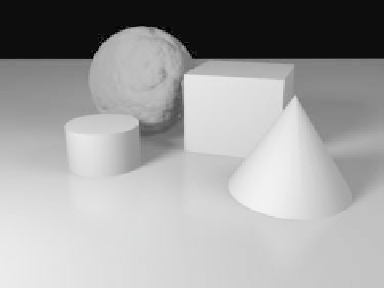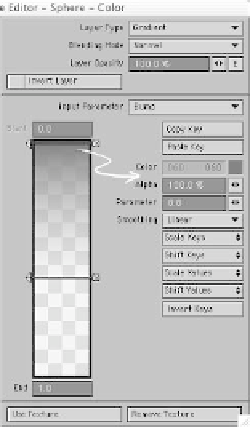Graphics Programs Reference
In-Depth Information
Figure 4-46
Figure 4-48
Entering the Texture Editor for the Color
channel, we see that the Layer Type is set
to Gradient and that its Input Parameter
(what it is referencing) is the surface's
Bump channel.
So what does it all mean? Well, the best
way to get a handle on finding out is to take
it away and see how things look then.
c.
Let's take a closer look at the Gradient
settings.
When Input Parameter is set to Bump,
that means that whatever settings are on
this layer are spread out between where the
Bump channel is at its lowest (Start 0) and
where it's at its highest (End 1.0).
Note
Deactivate the Texture layer by click-
ing to remove the check next to “G:
Bump” (the only Texture layer listed).
Looking back at Figure 4-45, notice that
Invert Layer is checked, meaning that the
values generated by that layer are
inverted
.
That's why, in Figure 4-48, the dark coloring
we see in the key where the bump should be
at its lowest (
Start
0) is actually applied
where the sphere's bump is highest.
Making sure the top key (the bar-like thing
with the arrow on its left and the “x” box on
its right) is clicked, we see the Color, Alpha,
and Parameter settings reflect the attrib-
utes that key represents.
•
The
Color
is a dark gray, so where the
Bump channel is at its lowest, the surface is
also this dark gray color.
Figure 4-47: Quite a difference and not nearly
as interesting as with the Gradient color texture
active.








